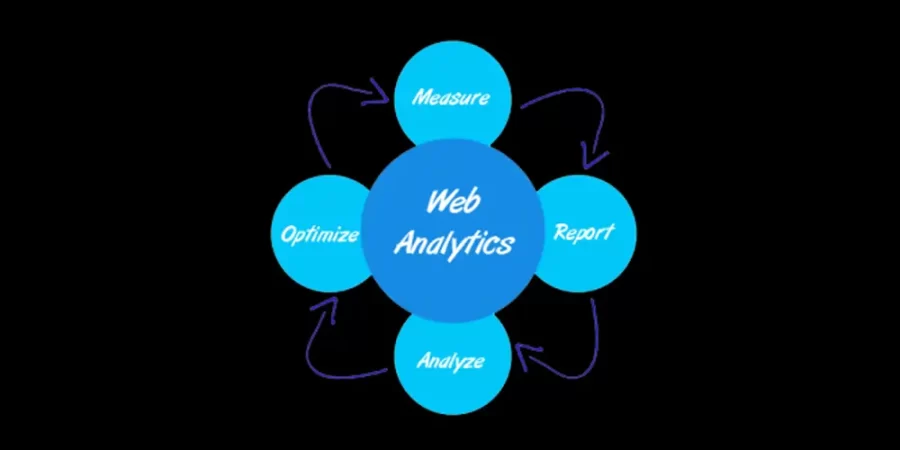Beginners Guide: How To Use Web Analytics Tools And Metrics To Improve Your Online Campaigns
Web analytics tools and metrics can be a powerful tool for improving your online campaigns, allowing you to measure the performance of your website, your marketing efforts, and your overall online presence. With the right tools and metrics in place, you can gain valuable insights into how your target audience is engaging with your website, where they are coming from, and what they are looking for.
One of the most important things to keep in mind when using web analytics tools and metrics is to focus on the metrics that matter most to your business. For example, if you are running an e-commerce website, you will want to pay close attention to metrics like conversion rate, average order value, and revenue per visitor. On the other hand, if you are running a content-based website, you may want to focus more on metrics like page views, time on site, and bounce rate.
Once you have identified the metrics that are most important to your business, you can start to use web analytics tools and metrics to improve your online campaigns. One of the most popular web analytics tools is Google Analytics, which provides a wealth of data on website traffic, user behavior, and conversion tracking. Other popular web analytics tools include Omniture, Piwik, and Clicky.
When using web analytics tools, it’s important to set up your tracking and reporting properly. This includes setting up goals, tracking ecommerce transactions and setting up custom dimensions and metrics. Also, setting up advanced segments or filters that allow you to see how different segments of your audience are engaging with your website can also be helpful.
Once you have your web analytics tools set up and you have a good understanding of the metrics that matter most to your business, you can start to use this data to improve your online campaigns. Here are a few tips on how to do this:
- Optimize your website: Use the data from your web analytics tools to identify areas of your website that are underperforming. For example, if you have a high bounce rate on a particular page, you may want to make changes to the design or content of that page to make it more engaging for visitors.
- Improve your search engine optimization (SEO): Use web analytics data to identify keywords and phrases that are driving traffic to your website. Use this information to optimize your website’s content and meta tags to improve your search engine rankings.
- Fine-tune your marketing campaigns: Use web analytics data to track the performance of your marketing campaigns. For example, you can use data on conversion rate and revenue per visitor to see which channels and campaigns are driving the most sales.
- Refine your targeting: Use web analytics data to identify your target audience. Use this information to create more effective marketing campaigns that are tailored to the interests and needs of your target audience.
- Use A/B testing: Use web analytics data to conduct A/B testing on different elements of your website and marketing campaigns. For example, you can test different headlines, calls to action, and images to see which ones perform the best.
By using web analytics tools and metrics to track the performance of your website and marketing campaigns, you can gain valuable insights into how your target audience is engaging with your brand. With this information, you can make data-driven decisions that will help you to improve your online campaigns and drive more sales and revenue.
Another important aspect of using web analytics tools and metrics is to regularly review your data and make changes based on what you see. This could mean making changes to your website, adjusting your marketing campaigns, or even trying out new strategies. It’s also important to remember that your data will change over time and you should be prepared to adapt to these changes.
One of the best ways to stay on top of your web analytics data is to set up automated reports and alerts. This way, you can receive regular updates on the metrics that matter most to your business, without having to manually check your data every day. This can save you a lot of time and effort, and allow you to focus on making data-driven decisions to improve your online campaigns.
Another important aspect of using web analytics tools and metrics is to ensure that your data is accurate and reliable. This means regularly checking your tracking and reporting to ensure that everything is set up correctly, and also making sure that your data is not being skewed by bot traffic or other issues.
Finally, it’s important to remember that web analytics tools and metrics are just one part of a larger picture when it comes to improving your online campaigns. While they can provide valuable insights, they should be used in conjunction with other strategies, such as user research, surveys, and focus groups, to get a more complete understanding of your target audience and how to best engage with them.
Using web analytics tools and metrics can be a powerful tool for improving your online campaigns, allowing you to measure the performance of your website, your marketing efforts, and your overall online presence. By focusing on the metrics that matter most to your business, setting up your tracking and reporting properly, regularly reviewing your data and making changes, setting up automated reports and alerts, ensuring your data is accurate and reliable and using web analytics in conjunction with other strategies, you can gain valuable insights into how your target audience is engaging with your brand and make data-driven decisions that will help you to improve your online campaigns and drive more sales and revenue.
Here are some bullet points to help you learn how to use web analytics tools and metrics to improve your online campaigns for success:
- Identify the metrics that matter most to your business: To effectively use web analytics tools and metrics, you need to know what you want to measure and what data is most important to your business. For example, if you are running an e-commerce website, you will want to pay close attention to metrics like conversion rate, average order value, and revenue per visitor. On the other hand, if you are running a content-based website, you may want to focus more on metrics like page views, time on site, and bounce rate.
- Use web analytics tools: There are many web analytics tools available, such as Google Analytics, Omniture, Piwik, and Clicky. These tools provide a wealth of data on website traffic, user behavior, and conversion tracking. It’s important to set up your tracking and reporting properly and set up advanced segments or filters that allow you to see how different segments of your audience are engaging with your website.
- Optimize your website: Use the data from your web analytics tools to identify areas of your website that are underperforming. For example, if you have a high bounce rate on a particular page, you may want to make changes to the design or content of that page to make it more engaging for visitors.
- Improve your search engine optimization (SEO): Use web analytics data to identify keywords and phrases that are driving traffic to your website. Use this information to optimize your website’s content and meta tags to improve your search engine rankings.
- Fine-tune your marketing campaigns: Use web analytics data to track the performance of your marketing campaigns. For example, you can use data on conversion rate and revenue per visitor to see which channels and campaigns are driving the most sales.
- Refine your targeting: Use web analytics data to identify your target audience. Use this information to create more effective marketing campaigns that are tailored to the interests and needs of your target audience.
- Use A/B testing: Use web analytics data to conduct A/B testing on different elements of your website and marketing campaigns. For example, you can test different headlines, calls to action, and images to see which ones perform the best.
- Regularly review your data: It’s important to regularly review your web analytics data and make changes based on what you see. This could mean making changes to your website, adjusting your marketing campaigns, or even trying out new strategies.
- Set up automated reports and alerts: One of the best ways to stay on top of your web analytics data is to set up automated reports and alerts. This way, you can receive regular updates on the metrics that matter most to your business, without having to manually check your data every day.
- Ensure your data is accurate and reliable: It’s important to ensure that your data is accurate and reliable, by regularly checking your tracking and reporting to ensure that everything is set up correctly and also making sure that your data is not being skewed by bot traffic or other issues.
- Use web analytics in conjunction with other strategies: Web analytics tools and metrics are just one part of a larger picture when it comes to improving your online campaigns. While they can provide valuable insights, they should be used in conjunction with other strategies, such as user research, surveys, and focus groups, to get a more complete understanding of your target audience and how to best engage with them.
In conclusion, web analytics tools and metrics are essential for understanding how your target audience is engaging with your online campaigns. By identifying the metrics that matter most to your business, using web analytics tools and setting up your tracking and reporting properly, regularly reviewing your data and making changes, setting up automated reports and alerts, ensuring your data is accurate and reliable and using web analytics in conjunction with other strategies, you can gain valuable insights into your target audience behavior and make data-driven decisions that will help you improve your online campaigns and drive more sales and revenue. Remember that web analytics is a continuous process and you should always strive to improve your efforts over time. With the right approach, you can use web analytics to optimize your online campaigns and take your business to the next level.





Leave a Reply